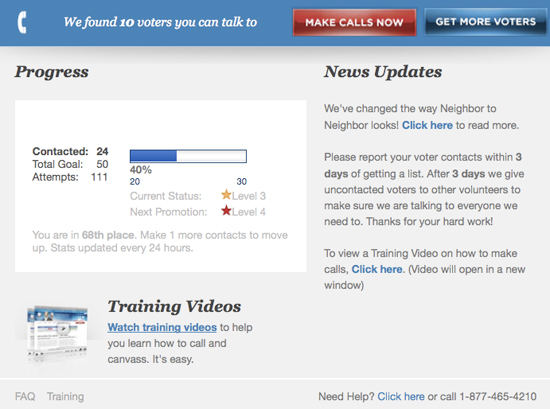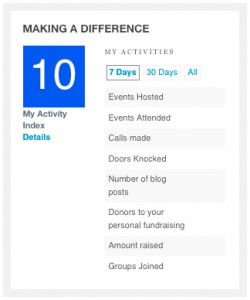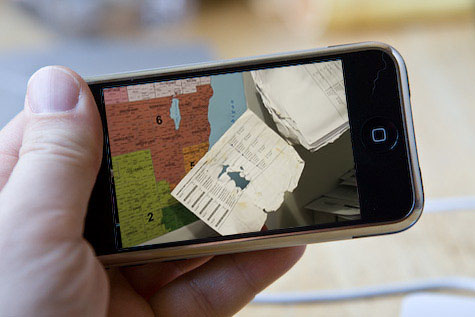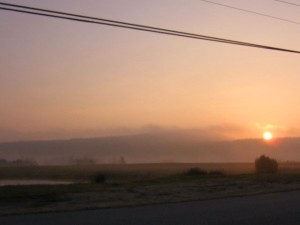Building Collective Capacity : New Forms of Political Organizing
I’m here at the Internet & Politics conference at Harvard University, co-hosted by the
Berkman Center for Internet & Society and the Institute of Politics. The purpose of
this event is to gather leading practitioners and scholars to reflect on lessons
learned from the recent Presidential election and preliminary thoughts on moving
forward from here.
The majority of the conference will be held by Chatham House rules — no attribution.
But the keynotes are open, and here’s the first one, featuring Prof. Marshall Ganz
(Harvard Kennedy School) and Jeremy Bird (Obama for America).
Marshall is giving a backgrounder on organizing as a general matter. He has significant
resources available on this topic elsewhere, but here is the quick summary:
What’s needed for purposeful collective action?
1. Leadership: Achieving shared purpose in the face of uncertainty.
2. Community: A collective entity capable of exercising agency.
3. Power: A community able to use its resources to achieve its purposes.
Enablers:
1. Shared values (broader than interests — they are the sources of motivation)
2. Peer commitments
3. Shared structure
4. Shared strategy
5. Shared action
6. Action that is clear, specific, intentional, and can be learned from
To what extent can new technologies support these activities? (Or detract from?)
The Obama campaign emphasized carpenters, not tools.
Now for Jeremy’s response:
The “Jazz” and “Classical” metaphor from 2004 describes the connection well. Start with
the startegy and look at technology as a resource. Four stories that illustrate the
interdependence between technology and strategy.
1. April 11, 2007 — Florence, South Carolina. Not necessarily the most tech-savvy
state. In putting together tickets, were planning to capture emails, but then decided
to also capture cell phones. In December with Oprah, asked 30,000 to text the campaign
and also capture their numbers. Texting underappreciated — were able to text just the
team leaders. Or have volunteers send back pictures to keep other teams motivated. South Carolina house meeting program. Sam Graham-Feldson came to shoot video.
Despite the written program, no one knew what they were doing. What the video did was
tell the story: both to the rest of the campaign and to the community. (at 7:31, all the volunteers knew we’d won via the text message program).
3. Maryland. Teams who organized themselves using the MyBO tools. With two weeks left when Jeremy arrived to GOTV. This was a very different environment with much tighter connectedness. Through the ‘Net, bring together the volunteers into trainings, sufficient to hit every voter 3 times before the primary.
4. Pennsylvania. 8 weeks to go while TX and OH is going on. Took the online tool, PATeams tool, that allowed volunteers to log in and target neighbors. It was the “classical” and the “jazz” coming together. It enabled the volunteers to set and hit goals without setting up an office, to connect folks together and not just “go online and make calls” — they felt they were part of a community. Eventually led to the neighbor-to-neighbor tool.
5. Ohio (general election). We started to shoot all sorts of video. It was one of the most important things we did, because it told the story of what we were doing. Nationally, we set up VoteForChange.com that allowed people to download and turn in voter registration forms. As every individual downloaded the form, it gave organizers information about voters — but it turned out it was the most rich source of volunteers. These were young people who sought this out themselves.
These are still designed with field and new people sitting together. In 2008 we’re still figuring out if new media is a separate thing. We’re trying to figure out how to make organizing and online organizing work together.
In Maryland, a statewide group of 150 were already meeting every Saturday, all volunteers leading their own teams created through MyBO. Is it possible to use this technology for smaller campaigns? How to do it without the 2,500 paid campaign organizers that the Obama campaign had? The person who raises their hands first to be the leader may not be the best leader. One of the key questions is how to build leaders – how to define, how to select, are there tests? The hard part is that many of these are interpersonal skills; it’s not like learning geography. Marshall is trying to develop a distance course, but people will enroll as teams, not individuals. “Self-organization” is a chimera, a wish. It takes skill and practice. Buffy, in CA, was able to produce more calls per organizer than most other states using the technology to leverage. This was not the traditional leadership structure: we launched interdependent teams with shared norms, which diverged from the usual top-down individuals who burn out or have other issues. Coaching plays a critical role here. (Just because it’s face-to-face doesn’t mean it’s traditional).
Videos to ask people to sign up were very effective – saw great numbers. A good video, connected to a real narrative, and a way to capture people who say they want to do something connected to that. One of the real challenges is communication of emotion, affect, via the Internet. It’s easy to express emotion but harder to experience it, lacking the empathetic component. Video enables empathetic communication.
Counterfactually, what if Cesar Chavez had different tools – what difference do the tools vs. the carpenter make? If the Farmworkers collapsed because of a lack of accountability, then this risk is heightened without empathetic interaction. There was a time when the Farmworkers tried to market rather than organize the boycott – disastrous – perhaps the Internet would make this worse.
What to do when the wrong person becomes a team leader? Fire them. In PA, with only 8 weeks, we messed up. We spent too much time trying to figure out how to support bad leaders. Is there was more transparency because of the Internet tools – more data to measure outcomes.
Change.gov is, with “deliberate haste,” trying to figure out how to move forward. Still going through 500,000 responses to the survey, much of it qualitative. Last week’s conference of best team leaders to figure out what worked in the campaign. This weekend another round of house parties to keep getting more feedback. All of this is to figure out what the community wants. We’re not just asking the house parties to meet but do a service project around the holidays.
Re: Marshall’s interview with TechPresident – Marshall now states he perhaps was being impatient without an understanding of “deliberate haste.” The campaign is gathering lessons learned, which is wise.
But governance is different than both campaign mobilizing and community organizing. It’s key for us to know how to set up the organization. Also, the campaign was doing a lot of learning from mistakes and successes, and this has some resemblance to gathering feedback from the citizenry. A movement hasn’t emerged within an administration before – but why can’t government get people involved in the same way that the campaign trained team leaders.
The Obama campaign had enormous resources – “Don’t expect that to be the norm.” People contributed because they wanted to know that there’d be an office in their community – they could see the results. Alinksy: “There’s organized people, and there’s organized money.” Barack figured out how to do both.
You can offer tools, but you have to get people into the tools. The context was vital.






